HansenCrafts introduces a whimsical history of spinning – REVOLUTION!
We are so happy to have the owners of HansenCrafts visit us today, along with Andrea Love who created a prety amazing project for them recently. We’ll let them tell you the story!
We, (Kevin and Beth – HansenCrafts owners) were talking about the history of spinning, and how tiny the present epoch is in the realm of a history some 30,000 years long. We were trying to think of a way to present the evolution of the craft leading to the introduction of the miniSpinner, when we saw a video short by Andrea Love, and BLAM, we decided to produce this story in conjunction with her wonderful use of stop-motion animation. We thought that it would be great fun to share Revolution with the world… well, at the very least with the world of fiber enthusiasts!
The result is a whimsical view of the timeline of spinning using fiber to create the actors and sets! It shows (in an entertaining way) where we came from, where we are, and maybe gets us thinking about where we will go to keep the craft of spinning vital and moving ahead.
Here’s Andrea to tell and show you how she did it…
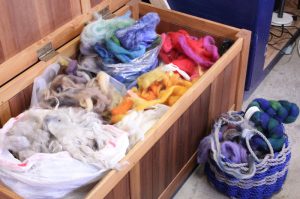
My trunk of wool. I included sheep, goat, llama, camel, silk, cotton and grass.
When Kevin and Beth contacted me about a video, I saw the potential to try something I had been dreaming about for a while- a fully felted animation. I thought of it like claymation, but with wool. Wool-motion? I have been incorporating fiber into my work for the past six years, but I decided it was time to take it to the next level. The Olympic Peninsula is incredibly rich with fiber producers, which gave me a huge array of colors and textures to work with, from unprocessed goat fleeces to dyed and carded blends.
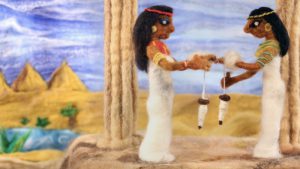
Egyptians drop spindling by the Nile River.
Having no prior knowledge of handspinning, I conducted a fair amount of research. I scrolled through Pinterest pages, watched videos on YouTube, and consulted books and online articles. I was blown away by all the painted portraits, pictures and videos of women spinning from all over the world. It emboldened me to include not just the spinning implement, but the women, landscapes and cultures as well.
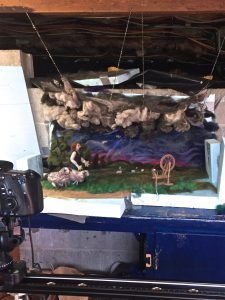
Setting up a panning shot.
Once sufficiently inspired by the rich history and tradition of handspinning, I started making scenes. This involved needle felting sets onto sheets of rigid blue foam sometimes upwards of two feet wide. The wire armature puppets were secured to the set using felting needles. The spinning wheels were felted over all sorts of things- wire, toothpicks, cardstock, scotchbrite, foam- anything to give it a stable structure. Kevin and Beth lent me a miniSpinner, so I was able to work in some handspun yarn as well. I enjoyed experimenting with short strands of different diameters and color combinations.
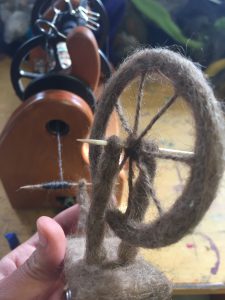
Using the HansenCrafts miniSpinner to wind some thread onto my felted spinning wheel
I filmed these scenes more or less in sequential order, so you can watch my technique evolve alongside the spinning implement. For the most part, these scenes originated in my imagination, but I did include one direct reference. The introduction of the spinning wheel in China is a felted homage to “The Spinning Wheel” by Wang Juzheng, one of the earliest illustrations of a spinning wheel, dating back to 960-1125 AD.
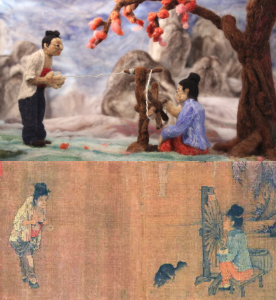
My felted homage to Wang Juzheng’s scroll “The Spinning Wheel”
There are 10 unique frames per second, all manually arranged frame by frame. If this seems tedious, it’s because it is! It took me three and a half months to make this. I used the music (an original song by my friend Eric Kuhn) as a guide, determining the rhythm and timing of the piece. It’s fun to imagine this as a music video, with the spinners masterfully playing their instruments. Revolution is very dear to my heart, and I feel like I’ve only just begun on this journey into fiber animation. 2017 is shaping up to be a fiber-full year, and I will be sharing more behind-the-scenes pictures and clips of my current projects through Instagram, as @andreaanimates.
Be sure to check out the full video to see it for yourself: Revolution!
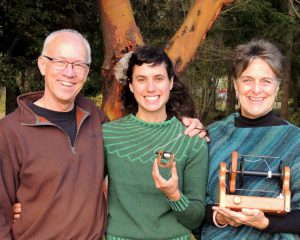
Andrea Love is a stop-motion animator and fiber artist, living and working out of her home in Port Townsend, WA. Her work can be found at www.andreaanimates.com. Here she is pictured between Kevin and Beth Hansen.


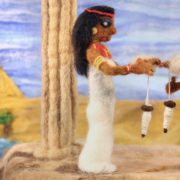
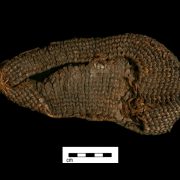
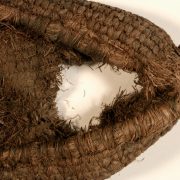
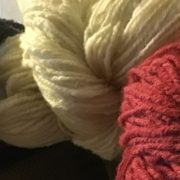
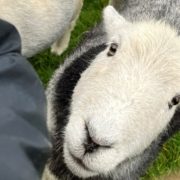
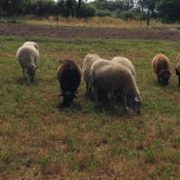
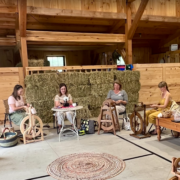


Wow! Love this!
I have always been fascinated with the history and development of spinning. What a fabulous link to our past, not just in my own individual culture, but to all of the past of humans on our planet!
When we touch our spinning tools, such as a handspindle, we are doing what our forebears did; spinning yarn to make something useful. It’s a powerful thing to do to mimic what the ancient peoples such as the Minoans, Hebrews, or even Polynesian cultures did in accomplishing such a quiet domestic task as spinning. Such a connection is a humbling experience when having viewed textile fragments or spinning tools that are thousands of years old.